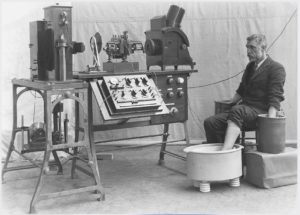Category Archives: Marketing History
Lies Can Be as Interesting as the Truth.
How to be a human lie detector.
Several years ago, my friend Jack, who’s an FBI agent, described himself as a ‘human polygraph.’ When I asked him how he did it, he said, “there’s no magic. I just pretend I have a terrible memory.”
It’s easy to over-focus on getting truthful responses from research participants. Not to say that truth isn’t important, but it’s good to remember that sometimes it’s valuable to let people lie to you. When they provide dishonest answers to your questions – whether deliberately or unintentionally – instead of describing the world as it is, they’re describing the world as they would like it to be, or telling you how they would like to see themselves.
This is particularly valuable learning when dealing with sensitive topics. People can be reluctant to tell you how they really feel about things, and instead tell you what they think you want to hear or what they think is socially acceptable. In other words, they’re providing clues about what embarrasses them, or compromises their self-esteem, or makes them uncomfortable. This can be key to uncovering hidden motivations.
So, when conducting research and analyzing your data, it’s important to be able to distinguish truth from falsehood. Over the course of my career, I’ve identified three invaluable techniques to tell if research participants are being honest. To be clear, these methods aren’t perfect, but I’ve found them to be pretty reliable
1) Ask the same question repeatedly.
This is the one I learned from G-Man Jack. To determine how truthful an answer is, ask the question multiple times and in a variety of ways. When people are telling the truth, they have no difficulty sticking to their story. But when they’re dissembling, their replies can be inconsistent, and the story tends to wander closer to the truth the more you press them.
Sometimes I’ll ask the question exactly as I asked it in the past, sometimes slightly differently. Such as:
-
Why do you use Tide?
-
What are your reasons for using Tide?
-
Why do you think so many people use Tide?
-
Why don’t you use Gain?
-
Why do you love Tide?
-
What is the best thing about Tide?
-
What are three things you like about Tide?
-
How would you describe people who love Tide?
-
What do Gain users not understand about Tide?
-
What don’t you like about Gain?
-
How do users of Tide differ from users of Gain?
-
And so forth. (I can do this all day.)





